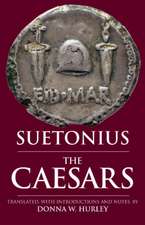From Local Patriotism to a Planetary Perspective: Impact Crater Research in Germany, 1930s-1970s: Science, Technology and Culture, 1700-1945
Autor Martina Kolbl-Eberten Limba Engleză Hardback – 18 mar 2016
| Toate formatele și edițiile | Preț | Express |
|---|---|---|
| Paperback (1) | 259.98 lei 6-8 săpt. | |
| Taylor & Francis – 30 iun 2020 | 259.98 lei 6-8 săpt. | |
| Hardback (1) | 1015.26 lei 6-8 săpt. | |
| Taylor & Francis – 18 mar 2016 | 1015.26 lei 6-8 săpt. |
Din seria Science, Technology and Culture, 1700-1945
-
 Preț: 310.88 lei
Preț: 310.88 lei -
 Preț: 475.16 lei
Preț: 475.16 lei -
 Preț: 469.34 lei
Preț: 469.34 lei - 12%
 Preț: 299.52 lei
Preț: 299.52 lei -
 Preț: 469.34 lei
Preț: 469.34 lei -
 Preț: 469.34 lei
Preț: 469.34 lei -
 Preț: 489.26 lei
Preț: 489.26 lei -
 Preț: 464.12 lei
Preț: 464.12 lei -
 Preț: 489.26 lei
Preț: 489.26 lei - 30%
 Preț: 820.73 lei
Preț: 820.73 lei -
 Preț: 469.34 lei
Preț: 469.34 lei -
 Preț: 469.34 lei
Preț: 469.34 lei -
 Preț: 486.49 lei
Preț: 486.49 lei -
 Preț: 416.22 lei
Preț: 416.22 lei -
 Preț: 469.34 lei
Preț: 469.34 lei -
 Preț: 469.34 lei
Preț: 469.34 lei - 17%
 Preț: 259.98 lei
Preț: 259.98 lei - 17%
 Preț: 259.98 lei
Preț: 259.98 lei - 12%
 Preț: 299.52 lei
Preț: 299.52 lei - 30%
 Preț: 821.13 lei
Preț: 821.13 lei -
 Preț: 489.26 lei
Preț: 489.26 lei - 26%
 Preț: 248.30 lei
Preț: 248.30 lei - 26%
 Preț: 876.78 lei
Preț: 876.78 lei -
 Preț: 384.66 lei
Preț: 384.66 lei - 16%
 Preț: 261.54 lei
Preț: 261.54 lei - 18%
 Preț: 1001.77 lei
Preț: 1001.77 lei
Preț: 1015.26 lei
Preț vechi: 1238.12 lei
-18% Nou
Puncte Express: 1523
Preț estimativ în valută:
194.28€ • 207.74$ • 161.98£
194.28€ • 207.74$ • 161.98£
Carte tipărită la comandă
Livrare economică 17 aprilie-01 mai
Preluare comenzi: 021 569.72.76
Specificații
ISBN-13: 9781472438867
ISBN-10: 1472438868
Pagini: 402
Dimensiuni: 156 x 234 x 24 mm
Greutate: 0.88 kg
Ediția:1
Editura: Taylor & Francis
Colecția Routledge
Seria Science, Technology and Culture, 1700-1945
Locul publicării:Oxford, United Kingdom
ISBN-10: 1472438868
Pagini: 402
Dimensiuni: 156 x 234 x 24 mm
Greutate: 0.88 kg
Ediția:1
Editura: Taylor & Francis
Colecția Routledge
Seria Science, Technology and Culture, 1700-1945
Locul publicării:Oxford, United Kingdom
Cuprins
Preface; Introducing the smoking gun; Early impactists and their sources; Dismissing impact I; A letter from Berlin; Kaalijärv Crater and Köfels landslide; Impact physics - beyond human imagination; ‘German geology’; Setting the stage; The tide is turning; Dismissing impact II; Testing an old theory; Ries Crater - a terrestrial proxy for the Moon; From local patriotism to a planetary perspective; Glossary; References; Index.
Notă biografică
Dr Martina Kölbl-Ebert is director of the Jura-Museum Eichstätt and curator of the natural history collections of the Bishop’s Seminary in Eichstätt, Germany. Her principal research interests are in the history of geosciences.
Recenzii
"This work is probably best described as an important contribution to the literature and a highly readable academic monograph (...) it is a vital resource for historians of the twentieth-century geosciences, as well as anyone interested in the cultural and social contexts that constrain science, offering as it does an excellent analysis in English of a global scientific debate centred on German ideas and geology."
- Leucha Veneer in Archives of Natural History, 2017
- Leucha Veneer in Archives of Natural History, 2017
Descriere
The Nördlinger Ries and Steinheim Basin, two geological structures in Germany, were traditionally viewed as volcanic edifices until they were recognized as impact craters in the 1960s. The changing views about the craters’ origins mark a paradigm shift in the Earth sciences, from an Earth-centric approach to a planetary perspective that acknowledged Earth’s place in the cosmos. Drawing on a range of printed sources and archival material, Kölbl-Ebert provides a reconstruction of the sequence of events as well as the emotions and motives of the scientists involved and the social context of their research.














